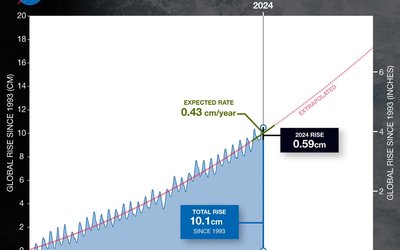Coastal erosion and coastal floods
Lower wind speed and waves along the Irish coast this century
January 23, 2017

Over 50% of the Irish population lives within 15 km of the coastline. The people of Ireland depend on the sea for recreation, sporting activities, tourism, fisheries and many other marine activities and industries, including renewable energy potential. It is important, therefore, to quantify Ireland’s future wave climate changes. These changes result from changes in wind climate.
Storminess along Irish coast will probably decrease
It is highly uncertain how winter storm tracks over the North Atlantic Ocean may change under climate change this century. Following the general consensus in the literature to date, the average wind changes over the North Atlantic by the end of the century are small and negative and less than the high natural interannual variability of the region. Natural variability is large and dominant and is projected to remain so for the century to come.
A recent study shows that mean wind speed at 10 m height will decrease this century up to 3% over the North Atlantic Ocean for all seasons under moderate and high-end scenarios of climate change. This study was based on global climate model projections for the period 2070 - 2099 compared with 1980 - 2009. The study also shows that wind extremes and storminess over the North Atlantic Ocean will also decrease: the 5% strongest winds will decrease by up to 15%. Wind climate changes over the North Atlantic Ocean not necessarily reflect future changes in wind climate over Ireland, however: the projected decreases in the frequency and intensity of wind storms crossing Ireland are not statistically significant.
As a result future waves will be somewhat lower as well
This changing wind climate over the North Atlantic Ocean results in changes in wave climate. A measure to describe wave climate is the so-called ‘significant wave height’, defined as the mean height of the highest third of the waves. Overall along the Irish coast, the annual and seasonal means of this ‘significant wave height’ will probably decrease, up to 10% by the end of this century. The same holds for larger ‘storm-waves’. This estimate of a future reduction of ‘significant wave height’ in the North Atlantic Ocean agrees with previous studies. One should be aware, however, that in addition to wind climate projections, wave climate projections for this region are also uncertain.
Source: Gallagher et al., 2016. International Journal of Climatology 36: 4592–4607
Photo: Thornypup (www.flickr.com)








